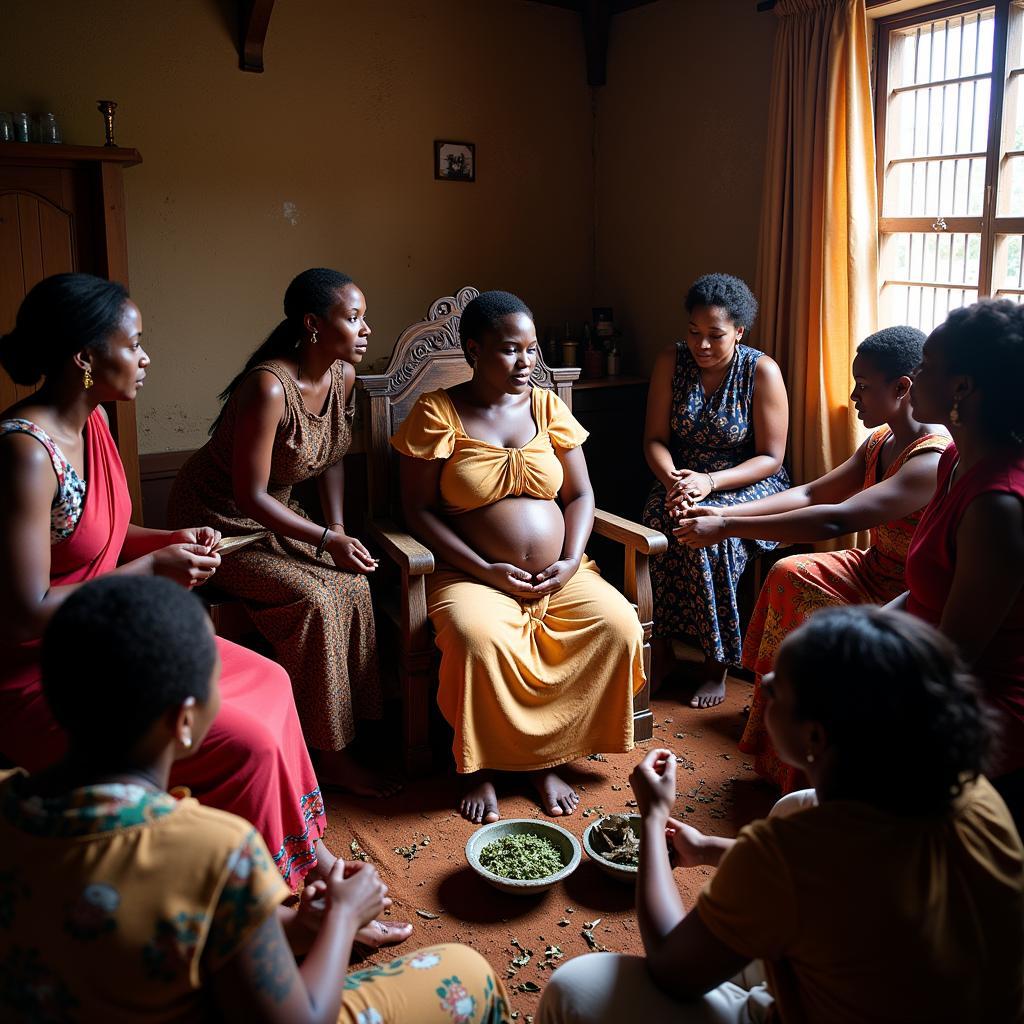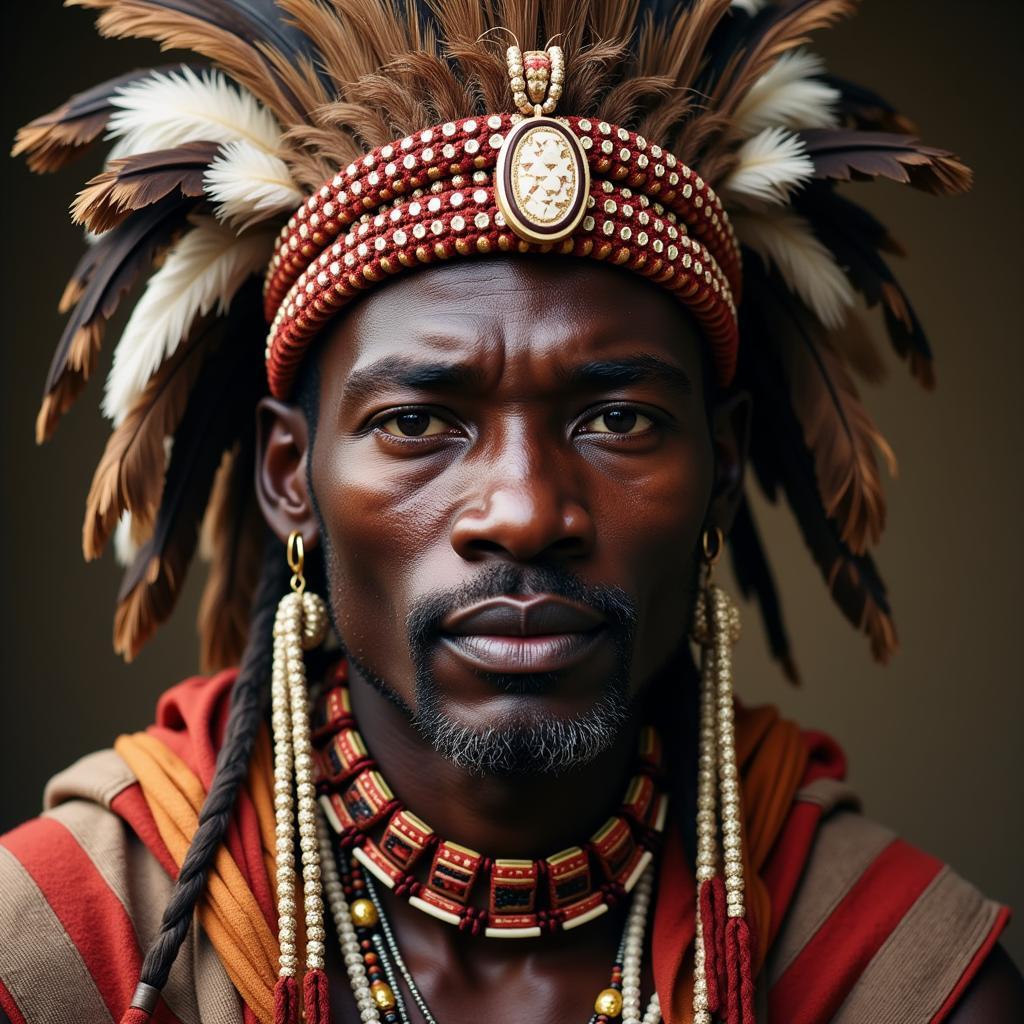African Birthing Chair History: A Journey Through Tradition and Culture
African birthing chairs hold a significant place in the history of childbirth across the continent. These chairs, often intricately carved and imbued with symbolic meaning, represent more than just functional objects; they embody cultural values, ancestral knowledge, and the profound connection between women, childbirth, and community.
Unveiling the Significance of the African Birthing Chair
For centuries, across diverse African cultures, birthing chairs have played a vital role in supporting women during labor and delivery. These chairs, passed down through generations, are often considered sacred objects, imbued with the power to ease the birthing process and ensure a safe passage for both mother and child. They symbolize strength, resilience, and the continuity of life. The history of the african birthing chair is deeply intertwined with the spiritual beliefs and social structures of various African communities.
Construction and Symbolism: Decoding the African Birthing Chair
African birthing chairs are typically crafted from wood, often chosen for its durability and spiritual significance. The designs vary considerably across different ethnic groups, reflecting unique artistic traditions and beliefs. Some chairs feature intricate carvings of animals, representing strength and protection, while others incorporate geometric patterns symbolizing fertility and continuity. The low seat and curved backrest provide support and comfort during labor, facilitating a more natural birthing position. The open design of the chair also allows for easy access by midwives and other birth attendants.
The Role of Community in Traditional African Birthing Practices
 African Birthing Ceremony and Community Support
African Birthing Ceremony and Community Support
In many African cultures, childbirth is a communal event. Experienced midwives, often elder women within the community, play a crucial role in guiding and supporting the expectant mother throughout the process. The birthing chair serves as a focal point, bringing together women of different generations to share their knowledge and experience. This shared experience reinforces the importance of community and intergenerational support in traditional African societies.
Exploring Regional Variations of the African Birthing Chair
While the concept of the birthing chair is widespread across Africa, specific designs and practices vary significantly between different regions and ethnic groups. From the elaborately carved stools of the Luba people in the Democratic Republic of Congo to the simpler, yet equally significant, chairs used in other parts of the continent, each style reflects unique cultural adaptations and beliefs.
How Did African Birthing Chairs Influence Modern Birthing Practices?
 Modern Birthing Practices Influenced by African Tradition
Modern Birthing Practices Influenced by African Tradition
The principles of upright birthing positions, facilitated by the use of birthing chairs, have influenced the development of modern birthing stools and other birthing aids. These modern adaptations acknowledge the benefits of upright positioning for easier labor and delivery. The resurgence of interest in natural birthing practices has also led to a renewed appreciation for the wisdom embedded within traditional birthing traditions.
“African birthing chairs are not just relics of the past; they are powerful symbols of resilience and the enduring strength of African women,” says Dr. Abena Kwame, a renowned anthropologist specializing in African cultural history. “These chairs represent a deep understanding of the female body and the natural birthing process.”
“The communal aspect of traditional African childbirth is particularly noteworthy,” adds Dr. Kwame. “The presence of experienced midwives and other women provides essential emotional and physical support to the expectant mother, creating a sense of security and empowerment.”
The history of the african birthing chair provides a fascinating glimpse into the rich tapestry of African culture and the deep-rooted traditions surrounding childbirth. These chairs are not merely functional objects; they are tangible expressions of cultural values, ancestral knowledge, and the profound connection between women, childbirth, and community.
FAQ
- What is an African birthing chair? A traditional chair used by women during labor and delivery in many African cultures.
- What are African birthing chairs made of? They are typically made of wood.
- Why are African birthing chairs important? They provide support and comfort during labor, symbolize strength and resilience, and represent the importance of community in childbirth.
- Are African birthing chairs still used today? While modern medical practices are prevalent, some communities continue to use birthing chairs, and their principles have influenced modern birthing aids.
- Where can I learn more about African birthing chairs? Research anthropological studies and explore museum collections focused on African art and culture.
- What is the symbolism of the carvings on the chairs? The carvings often represent animals, geometric patterns, and other symbols related to fertility, strength, and protection.
- How do African birthing chairs differ across regions? Designs and customs vary widely across different ethnic groups, reflecting unique cultural beliefs and traditions.
If you need further assistance, contact us at +255768904061, email kaka.mag@gmail.com or visit us in Mbarali DC Mawindi, Kangaga, Tanzania. Our customer service team is available 24/7. You might also be interested in reading more about traditional African art or exploring other aspects of African culture on our website.



